IF you want to build your own heater IE
cheaper.
Dang that tape is kind of cool. I just upgraded my heat setup using a 3d printer silicone heat pad + aluminum 1/4" plate as a raised floor (minutes ago)-initial test in progress. Turns out there isn't a lot to be had in the USA &/ ETA < 6wks in the 12v flavor and with acceptable wattage/size. I ended up with a 120w 12v 120x120mm w/ thermistor.
The previous setup was an incubator heater (12v 100w and 60mm fan, measured high 92w @ 13.34v on Victron BMV) and never got used in the wild. Not that it didn't work - it passed all tests (sitting on my patio in 20*F) - but fan crapping out was a concern and I wanted to control both the fan and its heating element separately. Even got
PID control working on the heating element but I disliked the thought of fan failure, relay sticking on, more wires in an increasingly cramped enclosure, yadaya.

Anyway, on to the new...
A microcontroller paired with a 3d printer heat bed module MOSFET operates the heat pad at the perfect temperature (as measured by the incorporated thermistor) so the floor will never really deviate from the setting. Once it's up to temperature it only requires a trickle of wattage to maintain in open air tests (maintain 120*F in 66*F ambient, still air..) , so I'm hoping this will be a tiny amount of draw once I throw it in the truck and the box it'll reside in is all sealed up, just trying to maintain like
47*F
Heat pad $16 (or pick anything with better dimensions for your build, or a full wrap, or something from the slow boat)
Some serious aluminum $27
A 3.3v suitable initial switching MOSFET module $9
One of the two of this 2pk of 3d printer heat bed modules, so $5.50
A $5 arduino nano clone, or a $19 particle photon, or a ESP8266/esp32 dev module for $8, whatever
Some jumper wires from a many-hundred pack
A breadboard
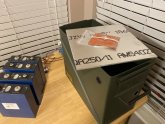
This is a 12 watt heater without incorporated thermistor. I ended up ordering two of these, advertised as bee colony warmers or something. Could have made them work but weren't adhesive backed and were less durable than the one in the parts list that I ultimately used. These seem like the standard fare silicone heaters that you'd get from China, and they heated well. Shoo, I might have been able to get by with a single 12w pad... but I wanted to be sure, and I liked the durability and 3m backing of *
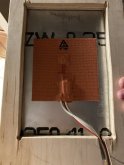
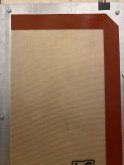
^ the aluminum doesn't really have a hot spot even operating the pad at 90w. Maiden test capped at 50w. But still, added a strip of silicone from a cheap 3pk of silicone baking sheets from amazon. It's nice and nonskid, thin, transfers heat well, felt like the right thing to do after drinking a lot of beer and looking in to a stupid box for 3 hours with my hands on my hips like a dingaling.
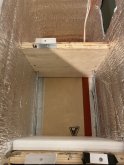
^the same cell holding strategy as in the initial incubator fan heater. You can see why this wasn't really a great solution when the heat was blasting from the opposite side of the can, hitting a wooden wall, trying to maintain a hunk of cells.
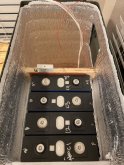
loaded... more insulation has been shoved around certain places, cells have been locked in place from movement in any direction, ceiling on top of the whole shebang with BMS and other crap mounted on it...

I'm going over the top with this project but for simple insanely consistent heating... give DIY control some thought. Plug some wires in to numbered holes, connect some positive and negative wires to screw terminals, copy paste 20 lines of code and press play. Aluminum is biggest expense. My hope is that this heats slowly from the bottom so I don't get the BMS or Victron BMV prematurely enabling charge because... heat rises and stuff.
Edit: it's been like 2 hours running the plate at a maintained 78.5*F and is requiring about 8 watts to do this, installed, cells atop it. Starting temp was 67*F combined avg between BMS' onboard temperature reading and its separate probe. In that 2 hours time I've reached 71.6*F combined. This is not a fast heating solution so if I ever program it to shut off it'll be right after sundown, turning on many hours before sunrise. If I can leave it on permanently I'm just going to do that.. and I have a feeling I probably can. Low and slow works for me.
A mildly interesting observation is that it was taking like 0-4w to maintain 120*F in 66*F ambient, open air, plate just sitting on that wooden donut on my coffee table. That was reached in 2 minutes according to thermistor reading, and plate was warm-warm after a few additional minutes of soaking. Guessing the cells and all the materials are sucking heat off the plate which is requiring more to maintain









